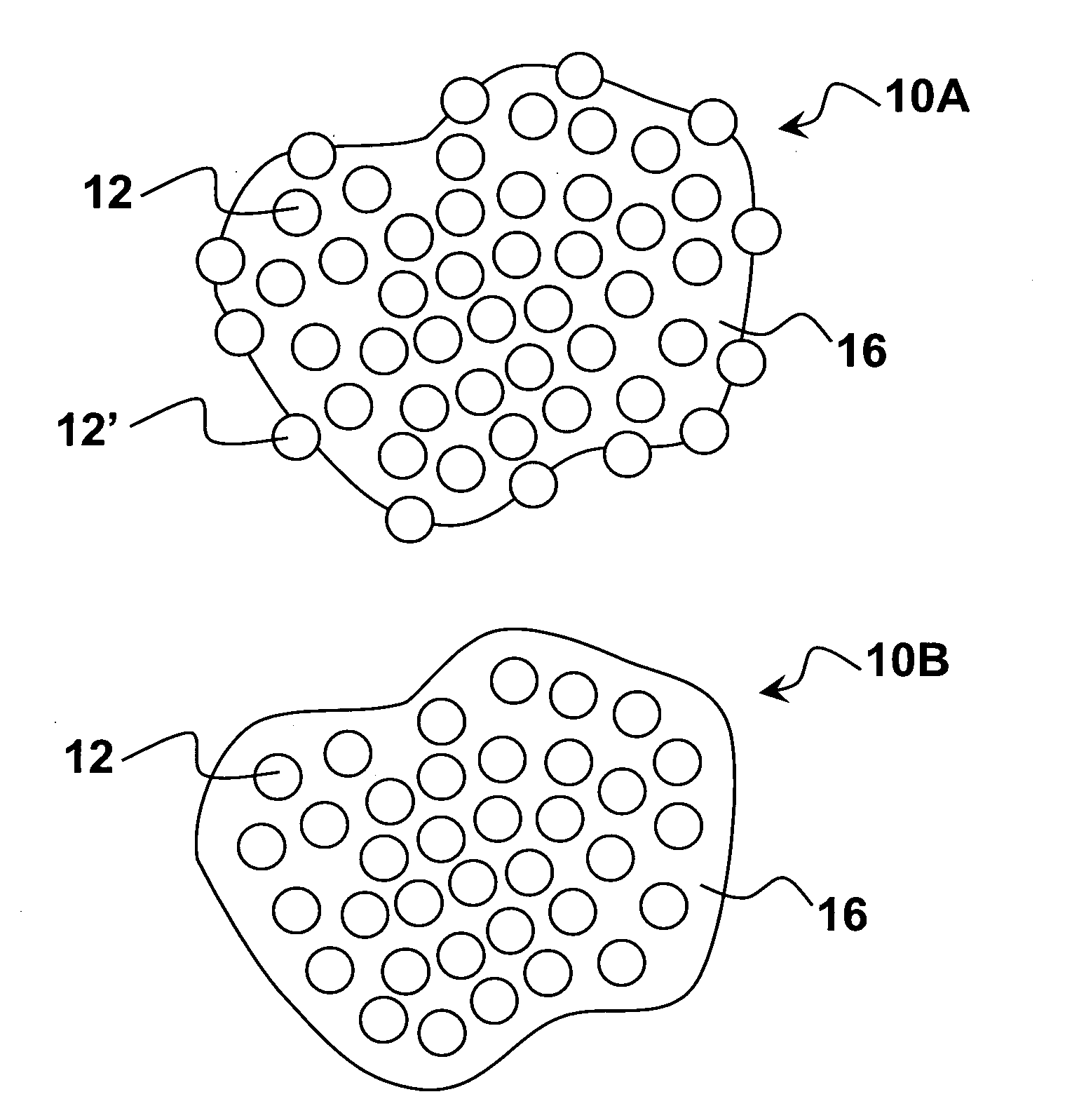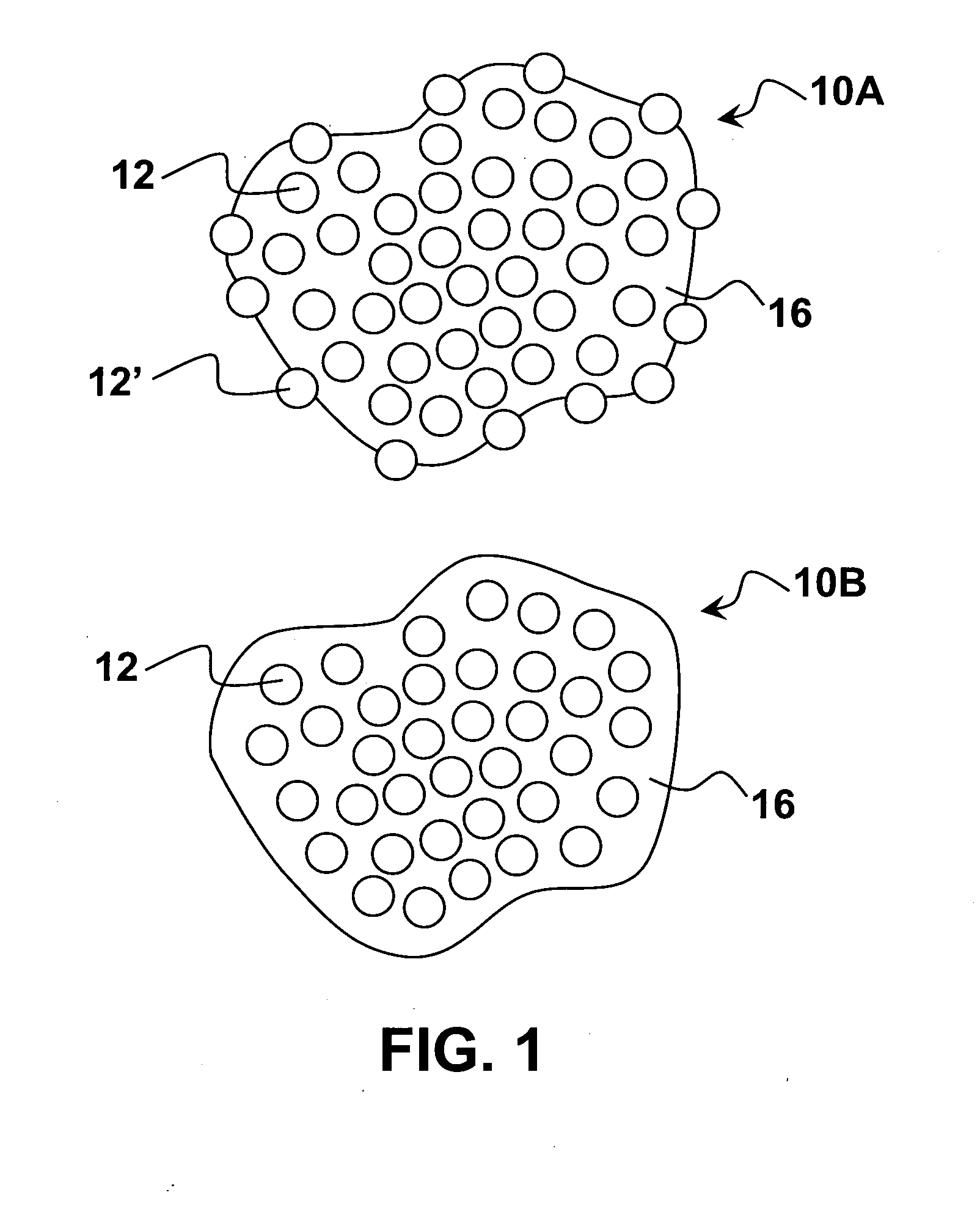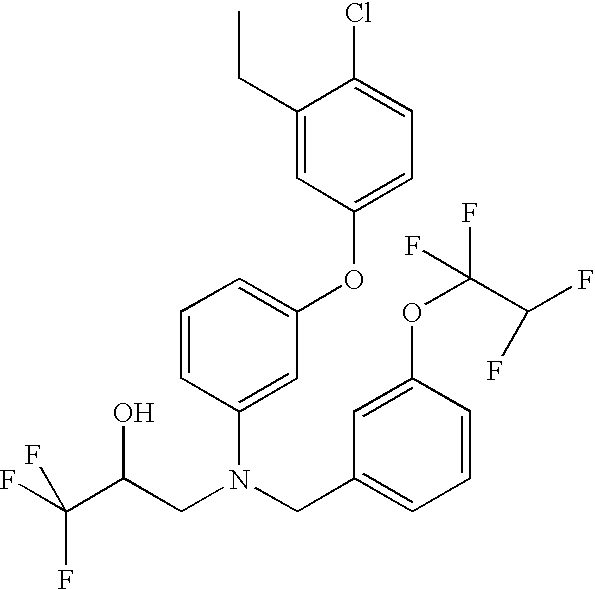Pharmaceutical compositions comprising nanoparticles comprising enteric polymers casein
a technology of enteric polymer and nanoparticles, which is applied in the direction of drug compositions, microcapsules, and metabolic disorders, etc., can solve the problems of nanoparticles formed from poorly water soluble drugs, adverse physiological effects of materials, and decrease in performance and stability, so as to improve performance and stability, prevent or reduce the crystallization rate, and promote the stability of aqueous suspensions of nanoparticles
- Summary
- Abstract
- Description
- Claims
- Application Information
AI Technical Summary
Benefits of technology
Problems solved by technology
Method used
Image
Examples
example 1
[0111]The nanoparticles of Example 1 were made containing Drug 1, hydroxypropyl methylcellulose acetate succinate (HPMCAS-L, AQOAT-L from Shin Etsu, Tokyo, Japan), and casein. First, 150 mg Drug 1 and 150 mg HPMCAS were dissolved in 5 mL 3:1 ethyl acetate:methylene chloride to form an organic solution. Next, 100 mg sodium caseinate was added to 20 mL deionized water to form an aqueous solution. The organic solution was then poured into the aqueous solution and emulsified for 3 min using a Kinematica Polytron 3100 rotor / stator (Kinematica AG, Lucerne, Switzerland) at 10,000 rpm (high-shear mixing). The solution was further emulsified using a Microfluidizer (Microfluidics [Newton, Mass.] model M-110S F12Y with ice bath and cooling coil), for 6 minutes (high-pressure homogenization). The ethyl acetate and methylene chloride were removed from the emulsion using a rotary evaporator to a combined concentration of less than about 3 wt %, resulting in an aqueous suspension of nanoparticles,...
example 2
[0119]For Example 2, nanoparticles containing Drug 1 were prepared using a precipitation method as follows. First, a water-miscible organic solution was formed by dissolving 200 mg Drug 1 and 373.2 mg HPMCAS-L in 37 mL methanol. To form the nanoparticles, the stem of a glass funnel containing the organic solution was inserted under the surface of an aqueous solution consisting of 343 mL of filtered water, and delivered into the stirring vortex all at once, rapidly forming nanoparticles. The methanol was removed using a rotary evaporator to a concentration of less than about 0.1 wt %, resulting in an aqueous suspension of nanoparticles. DLS analysis showed that the average cumulant diameter of the nanoparticles in suspension was 109 nm, with a polydispersity of 0.26.
[0120]The aqueous suspension was concentrated using tangential flow filtration with a Millipore Biomax® 300 50 cm2 polyethersulfone membrane (available from Millipore Corp., Billerica, Mass.). The feed solution, consistin...
example 3
[0126]Nanoparticles containing Drug 1 and the enteric polymer carboxymethyl ethylcellulose (CMEC, available from Freund Industrial Co., Ltd., Japan) were prepared using the procedure outlined in Example 2 with the following exceptions. The water-miscible organic solution was formed by dissolving 93 mg Drug 1 and 181.2 mg CMEC in 20 mL methanol. The aqueous solution consisted of 180 mL of filtered water. The organic solution and aqueous solutions were then mixed rapidly to form nanoparticles. The methanol was removed using rotary evaporation to a concentration of less than 0.5 wt %, resulting in a nanoparticle suspension consisting of 34:66 (wt:wt) Drug 1:CMEC. DLS analysis showed that the average cumulant diameter of the nanoparticles in suspension was 110 nm, with a polydispersity of 0.39. The aqueous suspension was concentrated as described in Example 2.
[0127]To form an aqueous suspension of the present invention, sodium caseinate was added to this concentrated suspension, resulti...
PUM
| Property | Measurement | Unit |
|---|---|---|
| wt % | aaaaa | aaaaa |
| diameter | aaaaa | aaaaa |
| pH | aaaaa | aaaaa |
Abstract
Description
Claims
Application Information
 Login to View More
Login to View More - R&D
- Intellectual Property
- Life Sciences
- Materials
- Tech Scout
- Unparalleled Data Quality
- Higher Quality Content
- 60% Fewer Hallucinations
Browse by: Latest US Patents, China's latest patents, Technical Efficacy Thesaurus, Application Domain, Technology Topic, Popular Technical Reports.
© 2025 PatSnap. All rights reserved.Legal|Privacy policy|Modern Slavery Act Transparency Statement|Sitemap|About US| Contact US: help@patsnap.com



